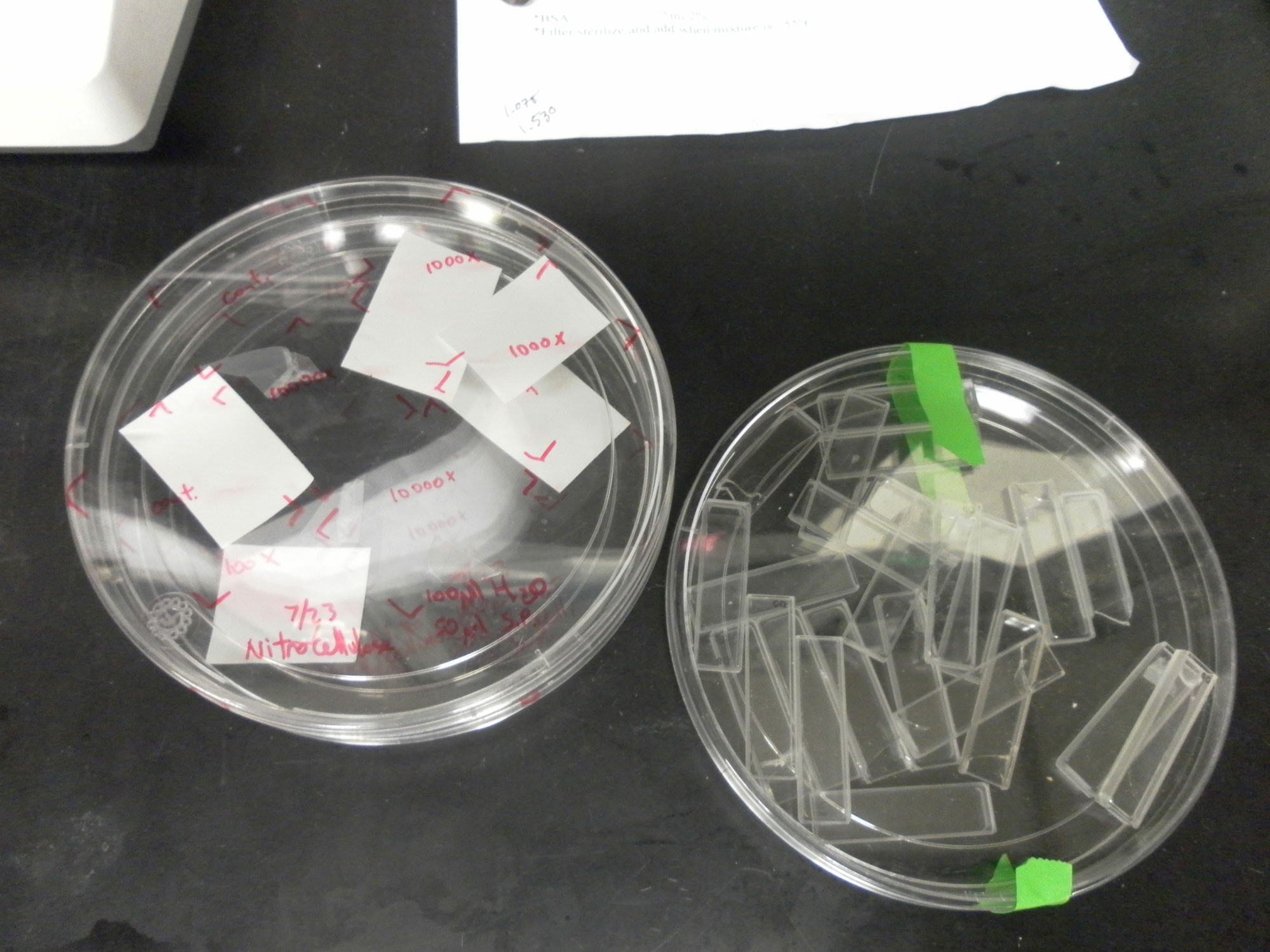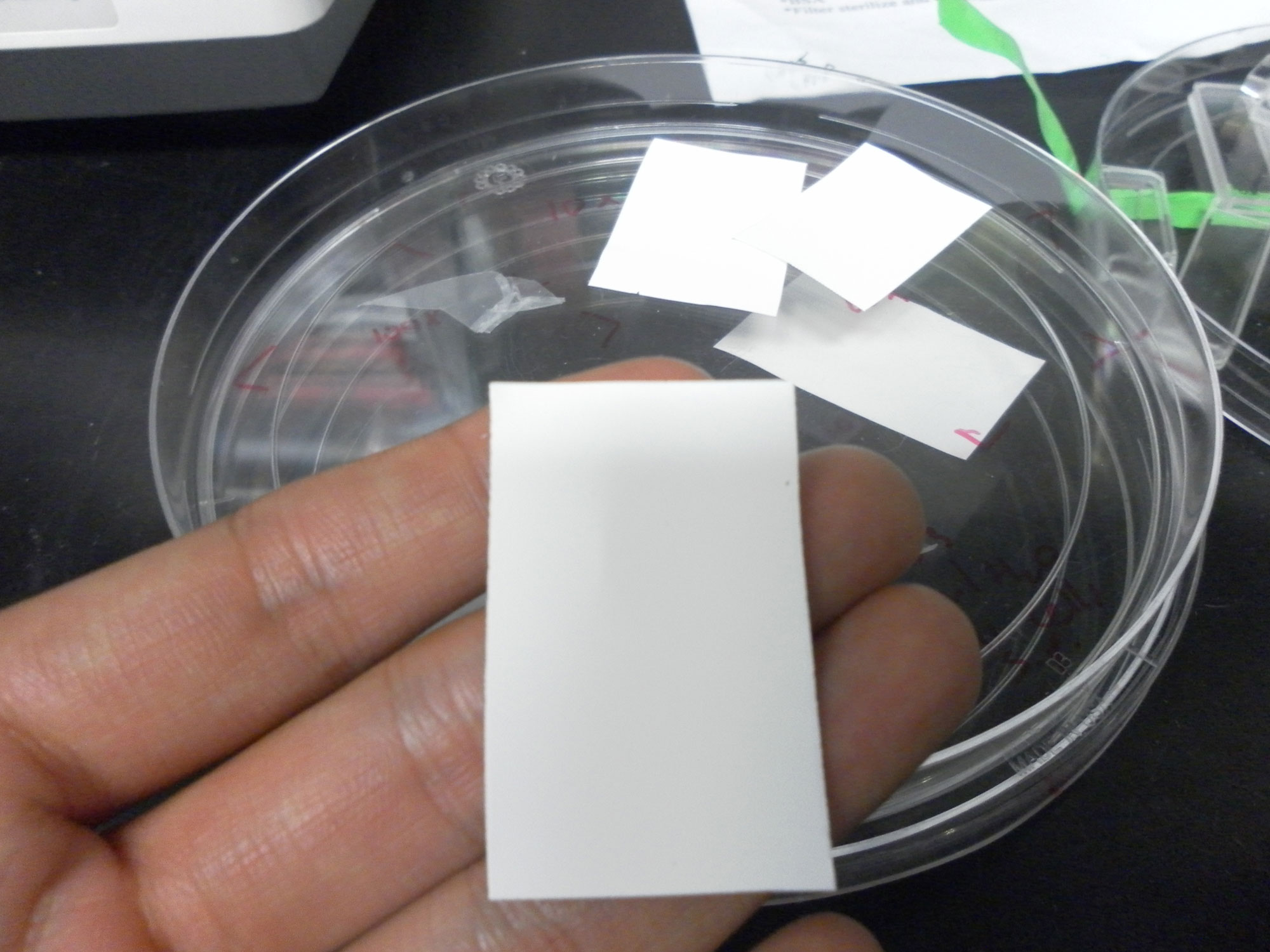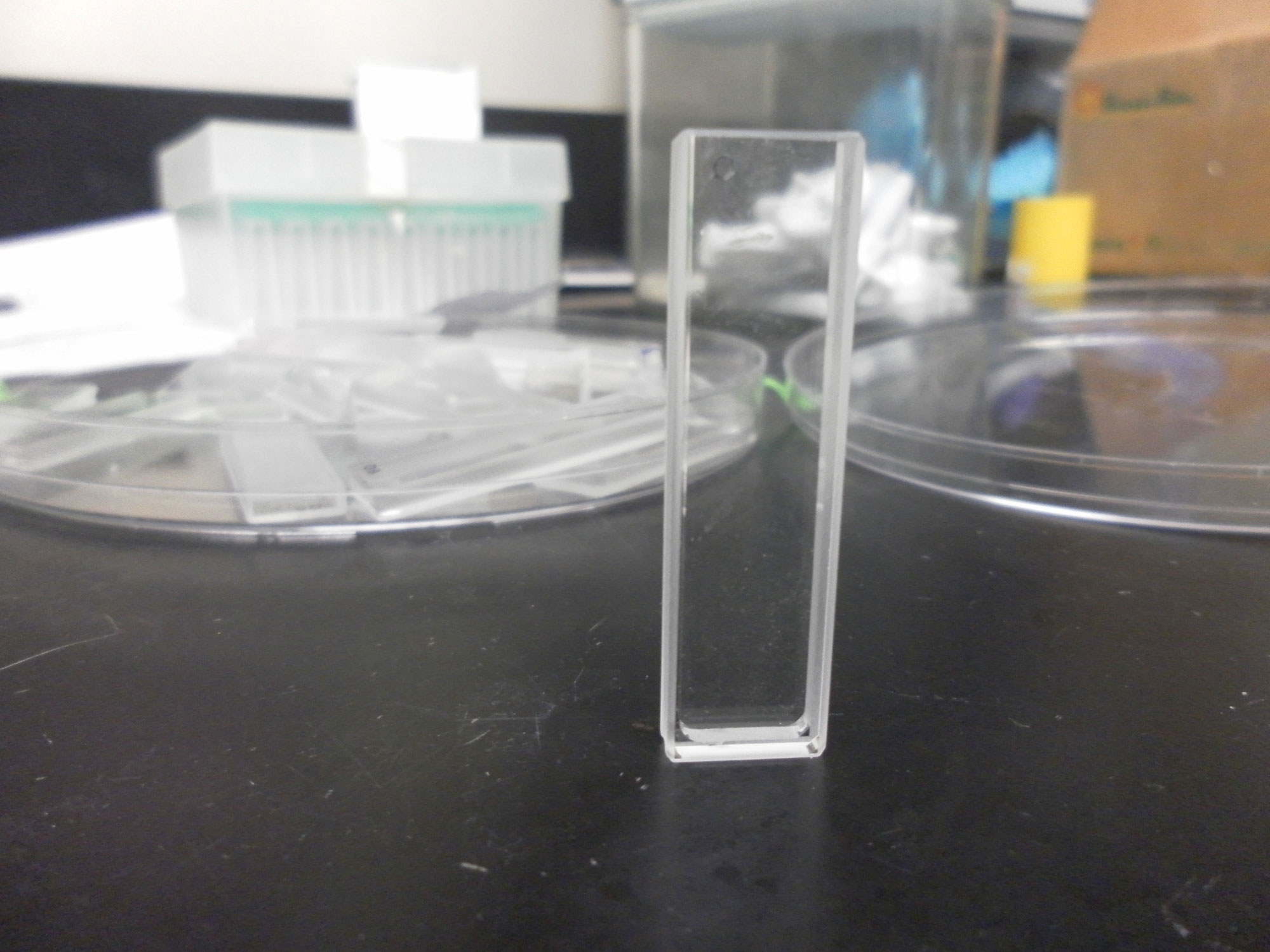Team:Brown-Stanford/Lab/Protocols/BalloonFlight
From 2011.igem.org
Preparation of Samples for Balloon Flight:
Materials:
- 12x glass cuvettes
- Nitrocellulose paper
- scissors
- Culture of S. pasteurii- grown up overnight
- Giant plastic petri dishes
- Ruler (accurate to mm, the better quality, the easier to would make preparing and inserting nitrocellulose into the *cuvettes)
- Ethanol
- a little petri dish holding water
- tweezers
Preparation Procedure- takes 2 days:
Day 1:
- Inoculate culture of S. pasteurii in 50 mL Bang, let it grow overnight
- using a piece of paper for preliminary size testing- find out what size the cuvette can hold
- Sterilize all cuvettes with ethanol, let stand in UV hood
Day 2:
- Gather all necessary materials in Room 378, sterilize scissors in UV hood
- cut nitrocellulose into strips with dimensions previously measured before
- bring into the hood: pipettes, petri dish with sterile water, bacteria culture,
- Lay the cut out nitrocellulose on giant petri dish
- add 100 mL of sterile water to each nitrocellulose, then add 50 mL of cells from culture
- label what the individual piece of paper are
- Let the pieces of paper dry in the 37 C incubator (in giant petri dish, with lid cover)
- using tweezers,insert each piece of paper into the cuvette, mark them correspondingly
- cover the tops of the cuvettes with parafilm
Loading
Using a cardboard foam cutout, secure four samples in each of the following locations on the balloon
- Inside the balloon carriage container, protected from impact, radiation, temperature. Not shielded against pressure.
- On the top of balloon carriage container, exposed to impact, radiation, temperature, pressure.
The other four will be left on the ground, as controls.
Recovery
- unload all cuvettes from the balloon.
- under sterile conditions, use a tweezer to deposit one cut-out flap of each nitrocellulose sample onto a Bang media dish
- incubate at 37 C for 24 hours
- examine growth
Suggested: Calibration of Recovery Ability
Before preparing launched samples on a balloon, one should test weather or not the dried sample will be able to be resuscitated. To do this, follow the above preparation procedures, but instead of loading the balloon, just plate it back on Bang plates, and observe growth.
 "
"











